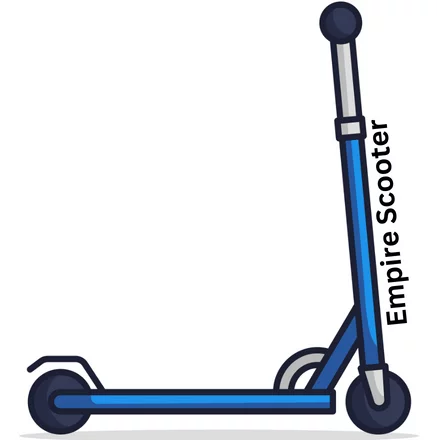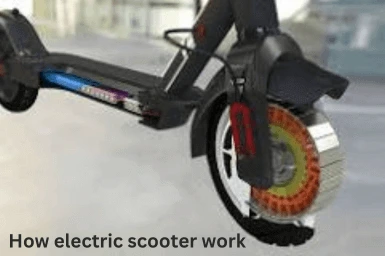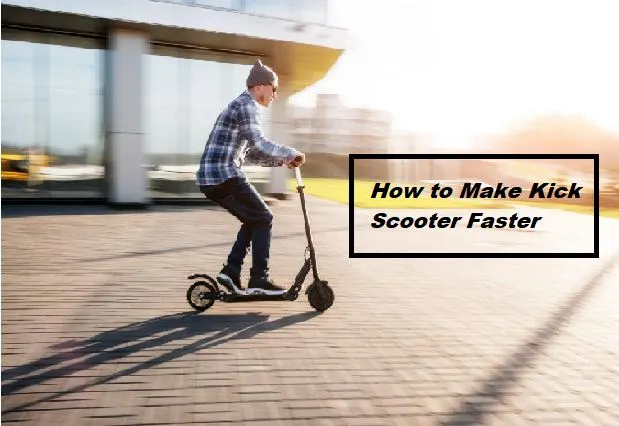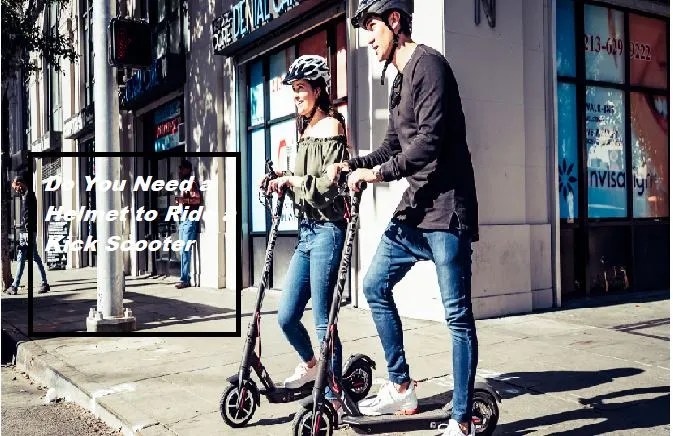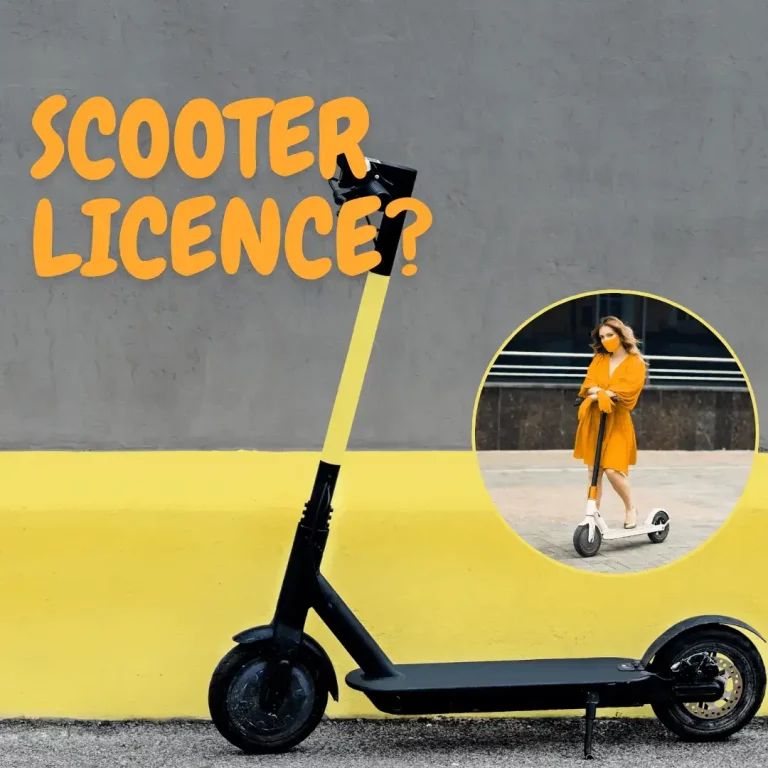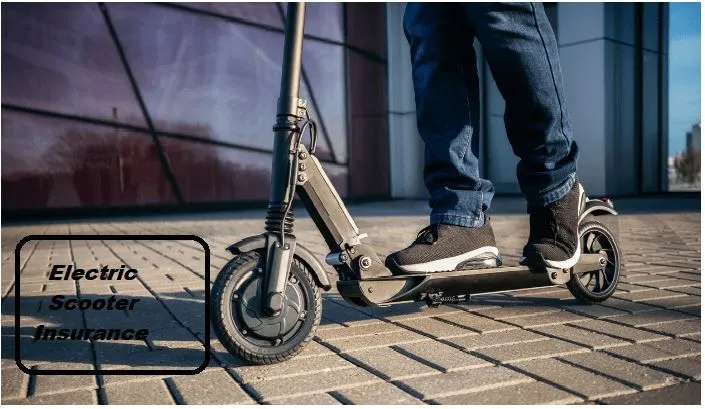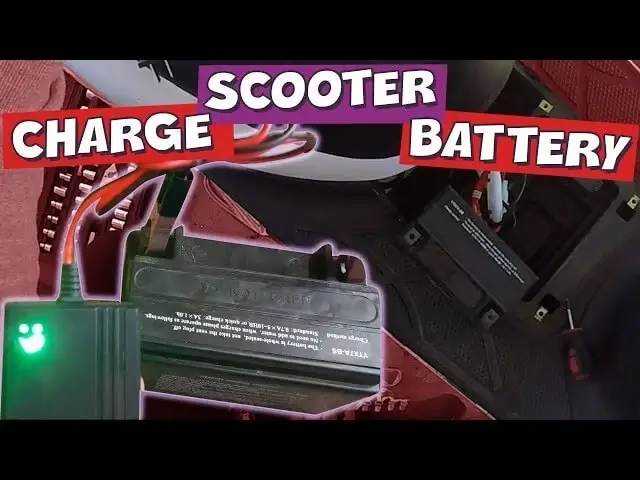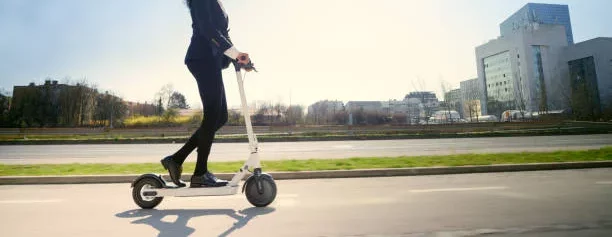How do Electric Scooters Work? (What you must know)
The electric scooter market has been growing rapidly over the last 10 years due to technological advancements and many other factors. These rides are environment-friendly, easy to use and maintain, and designed for ease of travel so that you can have more fun while riding.
But how do electric scooters work? What makes this urban travel vehicle’s brakes and wheels work? If you’re curious to know the working procedure of an e-scooter, you’ve landed in the right place. This ride has many cutting-edge features that may be difficult to get your head around. This article will briefly explain how different parts of an electric scooter work to move this ride ultimately. So, Let’s get started!
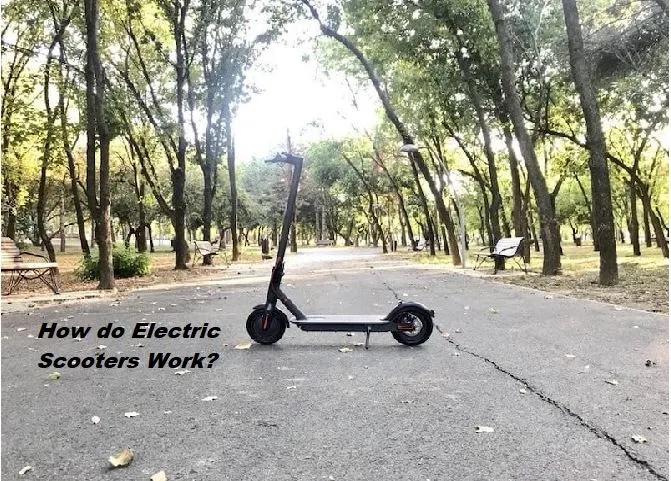
How do Electric Scooters Work? Ultimate Guide
As the name indicates, an e-scooter is an electrically powered vehicle that consists of 2 wheels and is designed like a motorcycle, usually without a seat. When we talk about its main components, it consists of a motor, battery, throttle, and controller. Of these parts battery and motor are the most essential.
The controller reacts in response to the twist a rider gives to throttle on the handlebar and commands the battery. The battery delivers the electricity to run the motor, which in turn rotates a gear that ultimately drives the wheels. The throttle is the key component that controls the speed of an electric scooter.
There’s no reverse movement in electric scooters; the only way is to move forward through the throttle. There’re 1 or 2 brakes in this ride that make it slow down and stop. Of course, it’s the gist of “How do electric scooters work?”. All the scooters in the market come with slight working differences. To better understand the working, we need to explore the working of all important parts separately. So sit on your back peacefully and read on to have complete knowledge.
Also Read: Do you need insurance to ride an electric scooter?
How Does an Electric Scooter Throttle Work?
The throttle is actually the part that commands the e-scooter to accelerate at a certain speed. The speed controller and the motor receive signals from this unit about how much power to use while riding. How fast the ride will go is entirely dependent on the amount of pressure a rider applies. On the whole, it comes in handy when you wish to drive in hilly areas and saves the power of the battery.
How Does Controller in Electric Scooters Work?
The controller is the brain of the scooter, and without it, the ride wouldn’t be able to work at all. It acts like a glue between acceleration, braking system, motor, and battery. The controller has a circuit board consisting of software and sensors that read the rider’s instructions and respond properly. It’s actually the part that interprets the data from the throttle and decides accordingly how much juice it should provide to the motor. It also looks through the data from the braking systems on your scooter to assist you in slowing down or stopping the ride.
How Does an Electric Scooter Battery Work?
The battery is the must-to-be part of the scooter that actually provides the power and determines how far the scooter will go on a single charge. The more powerful the battery, the longer distance it’ll cover in a single charge and, thus, the better will be the overall performance. Some batteries are good enough for riders to go within a range of 10-40 miles. There’re 3 types of batteries used in e-scooters. These are:
- Lead Acid
- Lithium-ion
- Nickel Metal Hydride
Working of Battery
The most commonly used are Samsung or LG lithium-ion batteries, as these are lightweight, durable, and long-lasting. The battery capacity determines how far it can go with a single charge. The 2 important matrices that are used to calculate the energy storage capacity of a battery are:
- Charge, which is expressed in Ampere-hours (Ah).
- Voltage, which is expressed in Volts (V)
The higher the voltage, the greater the power will be supplied to the motor by the battery. When both are high, the same will be the energy storage capacity of the battery. You can calculate energy storage capacity by multiplying Volts (V) by Ampere-hours(Ah) which is expressed as Watt-hours (Wh). So,
Energy Storage Capacity = 1 V * 1 Ah =1 WH
The higher the capacity, the greater will be the range of the scooter. On average, scooters have maxed out at about 12-15 miles on a single charge; thus, we can roughly estimate that every 10-20 Wh will give your ride about 1 Km of range. Of course, it’s not the only factor that determines the range; a few others, like road conditions, the weight of the rider, the weight of the scooter, etc., also play a big role.
When you feel that the battery isn’t working fine, you can upgrade it to a more powerful one, which will not only increase the range but improve the speed and overall performance as well.
How Does an Electric Scooter Motor Work?
The motor is part of the e-scooter whose power has an influence over the climbing ability, load capacity, and top speed. The working of the motor actually determines “how do electric scooters work?” Nowadays, 2 types of motors are generally being used in most e-scooters. These include
Brushed DC Motors
The history of Brushed DC (direct current) motors dates back to about the 1800s. Brushed motors have an efficiency of about 75-80%. These are based on old technology and use 2 sets of electromagnets to produce power. One is a large cylindrical while the other is smaller and embedded inside the cylindrical magnet. When the inside of the motor turns, it gives rise to the magnetic field that causes the inside to turn continuously, thus generating power.
Brushless DC Motors
Brushless DC (BLDC)motors are based on relatively advanced technology that dates back to the 1970s and has an efficiency of about 85-90%. The way these motors work is more or less similar to an inverse brushed motor. The magnets that move in brushed motors are stationary in brushless motors. Digital switching circuits inside these motors alternately power different coils.
There’s a strong chance that if you’re buying a new scooter, it’ll have a brushless motor, as almost all newer e-scooter brands are coming forward with brushless hub motors. The motor doesn’t use a driveshaft but a magnetism to spin, which is known as “armature.”There are magnets inside the armature. Outside the motor, all copper coils are electromagnets and are known as “stater” These surround the armature in a complete circle of 360- degrees and roll over their polarity in a circle one after the other, ultimately resulting in torque generation.
The working of this motor is simple as it reacts to the user’s input through the controller. When a rider puts pressure on the throttle, it sends signals to the controller instructing the battery to release energy to the motor in order to produce movements. The electromagnetic fields that are produced are distributed to the static coils, and the external motor part tries to follow this field, causing the wheel to spin.
The power generated by motors is expressed in Watts (W). Common electric scooters are rated between 250-600 Watts, but some are there with much more power. Always remember one thing, the scooter with less than 300W power will have difficulty going up the steeper paths. The motor power, along with other factors, also has some influence over the top speed. You can expect 1km/h for every 10-20 watts of motor power. It’s just an estimate and can vary over time. Mostly it’s around a certain baseline, actually known as real power, that can be calculated by multiplying motor voltage (V) by the ampere current (A). Simply:
Output Power (Watt) = Voltage (V) * Current(A)
These motors are long-lasting, expensive, and less likely to malfunction, thus requiring the least maintenance.
How do Electric Scooter Screens and Controls Work?
Most e-scooters have an LCD screen embedded at the handlebar’s center. Sometimes it comes with only 1 button, the “power button.”It’s used for various purposes, such as:
- Turn the power on or off
- Show information about the scooter, i.e., battery level
- Alter the driving mode
The power button, throttle, and brake lever are the only controls in the e-scooter that regulates functionality. A bell or horn is an optional component that is used to alert other riders in traffic.
FAQs
Can I take-scooter for a long drive?
It depends on the situation and what you define as a long drive. If you want to go within the radius of 40 squire miles, you can go with this ride, but if it’s beyond that limit prefer to go with any alternative.
How is electric scooter speed controlled?
The speed is controlled by an electric speed controller that acts on the throttle input and controls the flow of current from the battery to the motor.
How does an electric scooter accelerate?
When the rider press the throttle, it signals the speed controller and battery to provide appropriate power to the motor to accelerate the e-scooter.
Conclusion
We’ve discussed the basic mechanism of “How do electric scooters work?” An e-scooter consists of different components attached to an aluminum body. The working of these basic parts imparts the working of the e-scooter all in all. The main parts are the throttle, controller, battery, and motor, which work in collaboration to bring movement to scooter wheels. The ride time and batteries are going to get better with the intention to ensure you keep an eye on the market and take advantage of advancements in technology.
Happy learning and Safe Commuting!
